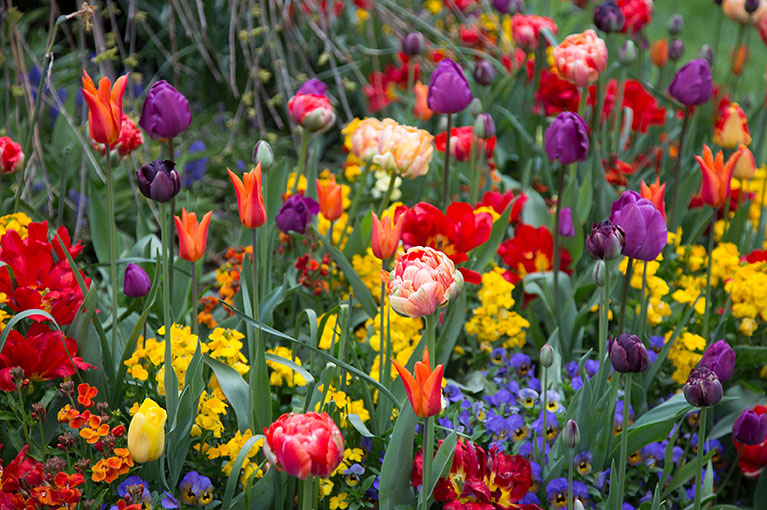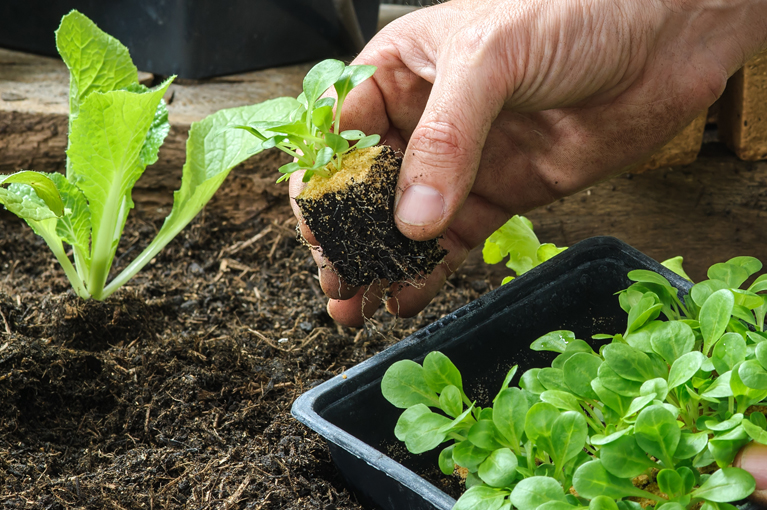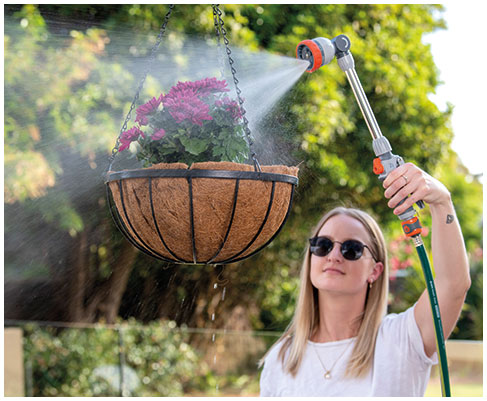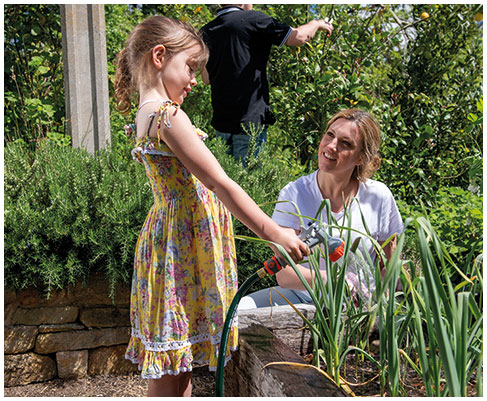Soups. Stir-fries. Shish kebabs. Garlic goes great with pretty much any savoury dish. You might be keen to grow garlic at home and have an ongoing supply of the versatile bulb. Here’s everything you need to know about growing garlic in Australia.
When should I plant garlic?
The best time to plant garlic in northern Australia is in autumn – so sometime in March or early April. It’ll then be ready to harvest late in the year, around seven to nine months later.
If you’re in a cooler climate (southern Australia), consider planting your garlic in spring, around September-October. Hard neck garlic is best here, while soft neck is better suited to warm climates.
Where should I plant garlic?
Garlic does best in rich, well-drained soil with a pH between 5.5 and 7. You may want to add some compost or manure on top, depending on the condition of the soil.
It also needs full sun – so choose a sunny spot in your garden. Just avoid planting it in a place that had Alliums the previous year eg garlic, onions, leeks, shallots or chives, as fungal diseases can persist in the soil.
How do I grow garlic from a clove?
It’s easy. But before buying any old bulb, take a trip to your local nursery to choose from an array of varieties that will be free from viruses and disease. Then follow these simple steps:

Step 1
Break the bulb into individual cloves.

Step 2
Push the biggest cloves into the soil with pointy ends up, between 7 and 15 cm apart – and between 2 and 5 cm deep (use the smaller cloves in the kitchen). If you don’t have a measure plant the clove 2 lengths deep and a hand length apart.

Step 3
Top with soil, add a little organic mulch, and water in well.

Step 4
Add a slow-release fertiliser and some manure or compost if the soil needs to be enriched. And if it has a neutral or low pH, add some lime.

Step 5
Wait to water the soil until the cloves leaves emerge – a couple of weeks after planting. Then water regularly to keep the soil slightly moist but not drenched, to avoid the bulbs rotting. The best way to water garlic is with a drip system, like Drip Eze. This distributes water slowly and accurately, and ensures you don’t under or overwater your cloves. Space out the watering so the soil dries and the roots grow deeper.

Step 6
Add mulch to deter weeds and keep the soil slightly moist, and consider topping up with a high-nitrogen fertiliser.

Step 7
Reduce watering and fertilising when the foliage starts to brown. This will happen around November in the northern Australia and May-June in southern Australia. Overwatering during this stage of the bulb’s development can cause root rot.

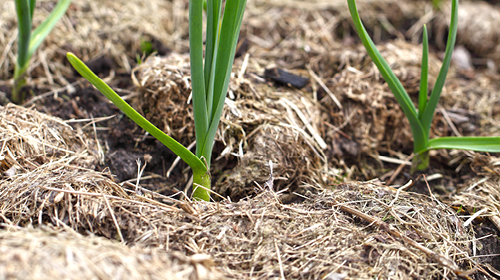


How do I grow garlic in a pot?
- Pop a pot in a sunny spot and fill it with potting mix.
- As above, pull apart the cloves and plant pointy ends up to between 8 and 10 cm deep and 10 cm apart.
- Top with soil and a little organic mulch.
- Water regularly as your garlic grows, keeping the soil moist but not sodden to avoid bulb rot.
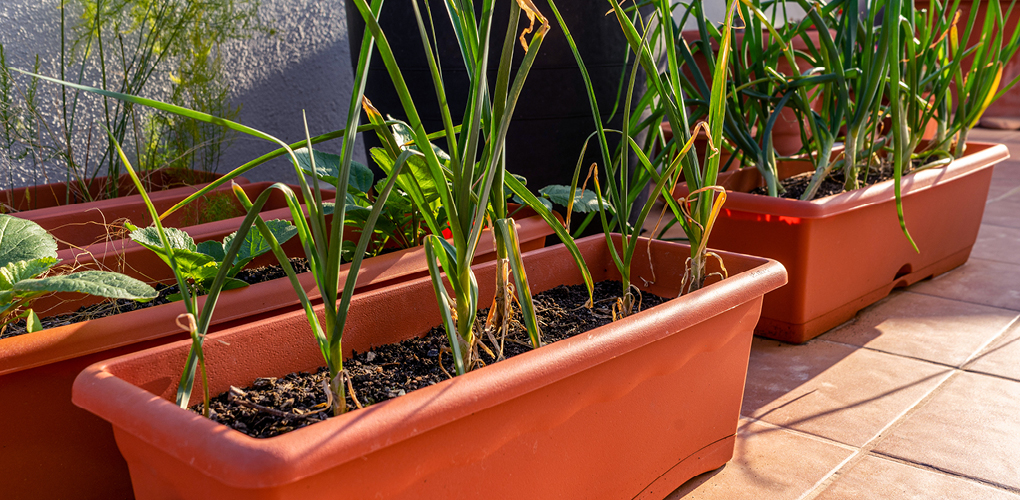
How do I harvest garlic?
Your garlic is ready to harvest when there are around four or five leaves left (and they’re turning brown) – or when the stems have started to soften and wilt. You may be able to grab the leaves and pull the garlic out of the ground. If not, just use a garden fork to gently bring them up.
Once it’s harvested, you’ll need to hang the garlic in a well ventilated spot, so the leaves can dry and bulbs harden. If there are enough leaves try plaiting the stems together and hang in a well ventilated dry location. Keep them there for around three-six months and then…add it to everything! If you’re happy with your variety keep some bulbs for the next season.
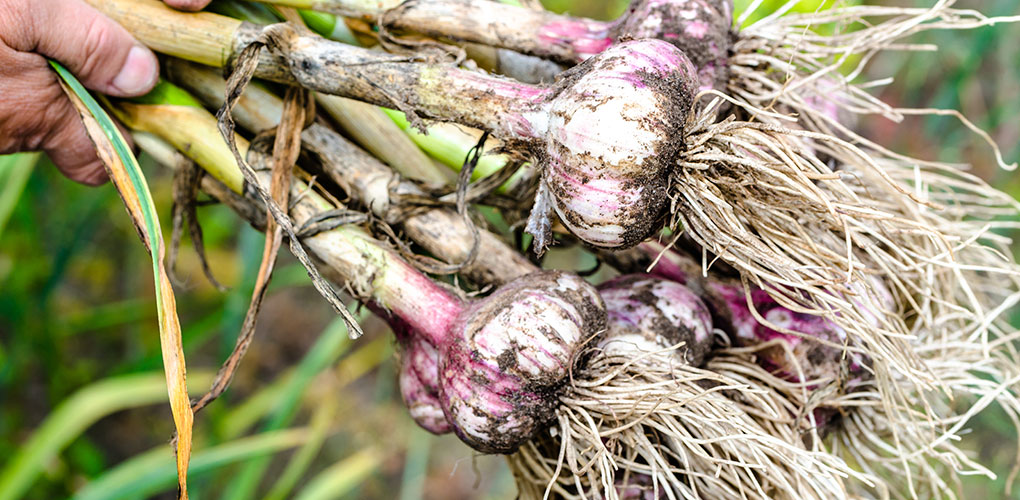
The best time to plant garlic in northern Australia is in autumn – so sometime in March or early April. It’ll then be ready to harvest late in the year, around seven to nine months later.
If you’re in a cooler climate (southern Australia), consider planting your garlic in spring, around September-October. Hard neck garlic is best here, while soft neck is better suited to warm climates.
Garlic does best in rich, well-drained soil with a pH between 5.5 and 7. You may want to add some compost or manure on top, depending on the condition of the soil.
It also needs full sun – so choose a sunny spot in your garden. Just avoid planting it in a place that had Alliums the previous year eg garlic, onions, leeks, shallots or chives, as fungal diseases can persist in the soil.
How do I grow garlic from a clove?
It’s easy. But before buying any old bulb, take a trip to your local nursery to choose from an array of varieties that will be free from viruses and disease. Then follow these simple steps:

Step 1
Break the bulb into individual cloves.

Step 2
Push the biggest cloves into the soil with pointy ends up, between 7 and 15 cm apart – and between 2 and 5 cm deep (use the smaller cloves in the kitchen). If you don’t have a measure plant the clove 2 lengths deep and a hand length apart.

Step 3
Top with soil, add a little organic mulch, and water in well.

Step 4
Add a slow-release fertiliser and some manure or compost if the soil needs to be enriched. And if it has a neutral or low pH, add some lime.

Step 5
Wait to water the soil until the cloves leaves emerge – a couple of weeks after planting. Then water regularly to keep the soil slightly moist but not drenched, to avoid the bulbs rotting. The best way to water garlic is with a drip system, like Drip Eze. This distributes water slowly and accurately, and ensures you don’t under or overwater your cloves. Space out the watering so the soil dries and the roots grow deeper.

Step 6
Add mulch to deter weeds and keep the soil slightly moist, and consider topping up with a high-nitrogen fertiliser.

Step 7
Reduce watering and fertilising when the foliage starts to brown. This will happen around November in the northern Australia and May-June in southern Australia. Overwatering during this stage of the bulb’s development can cause root rot.




How do I grow garlic in a pot?
- Pop a pot in a sunny spot and fill it with potting mix.
- As above, pull apart the cloves and plant pointy ends up to between 8 and 10 cm deep and 10 cm apart.
- Top with soil and a little organic mulch.
- Water regularly as your garlic grows, keeping the soil moist but not sodden to avoid bulb rot.

How do I harvest garlic?
Your garlic is ready to harvest when there are around four or five leaves left (and they’re turning brown) – or when the stems have started to soften and wilt. You may be able to grab the leaves and pull the garlic out of the ground. If not, just use a garden fork to gently bring them up.
Once it’s harvested, you’ll need to hang the garlic in a well ventilated spot, so the leaves can dry and bulbs harden. If there are enough leaves try plaiting the stems together and hang in a well ventilated dry location. Keep them there for around three-six months and then…add it to everything! If you’re happy with your variety keep some bulbs for the next season.

It’s easy. But before buying any old bulb, take a trip to your local nursery to choose from an array of varieties that will be free from viruses and disease. Then follow these simple steps:

Step 1
Break the bulb into individual cloves.

Step 2
Push the biggest cloves into the soil with pointy ends up, between 7 and 15 cm apart – and between 2 and 5 cm deep (use the smaller cloves in the kitchen). If you don’t have a measure plant the clove 2 lengths deep and a hand length apart.

Step 3
Top with soil, add a little organic mulch, and water in well.

Step 4
Add a slow-release fertiliser and some manure or compost if the soil needs to be enriched. And if it has a neutral or low pH, add some lime.

Step 5
Wait to water the soil until the cloves leaves emerge – a couple of weeks after planting. Then water regularly to keep the soil slightly moist but not drenched, to avoid the bulbs rotting. The best way to water garlic is with a drip system, like Drip Eze. This distributes water slowly and accurately, and ensures you don’t under or overwater your cloves. Space out the watering so the soil dries and the roots grow deeper.

Step 6
Add mulch to deter weeds and keep the soil slightly moist, and consider topping up with a high-nitrogen fertiliser.

Step 7
Reduce watering and fertilising when the foliage starts to brown. This will happen around November in the northern Australia and May-June in southern Australia. Overwatering during this stage of the bulb’s development can cause root rot.




- Pop a pot in a sunny spot and fill it with potting mix.
- As above, pull apart the cloves and plant pointy ends up to between 8 and 10 cm deep and 10 cm apart.
- Top with soil and a little organic mulch.
- Water regularly as your garlic grows, keeping the soil moist but not sodden to avoid bulb rot.

How do I harvest garlic?
Your garlic is ready to harvest when there are around four or five leaves left (and they’re turning brown) – or when the stems have started to soften and wilt. You may be able to grab the leaves and pull the garlic out of the ground. If not, just use a garden fork to gently bring them up.
Once it’s harvested, you’ll need to hang the garlic in a well ventilated spot, so the leaves can dry and bulbs harden. If there are enough leaves try plaiting the stems together and hang in a well ventilated dry location. Keep them there for around three-six months and then…add it to everything! If you’re happy with your variety keep some bulbs for the next season.

Your garlic is ready to harvest when there are around four or five leaves left (and they’re turning brown) – or when the stems have started to soften and wilt. You may be able to grab the leaves and pull the garlic out of the ground. If not, just use a garden fork to gently bring them up.
Once it’s harvested, you’ll need to hang the garlic in a well ventilated spot, so the leaves can dry and bulbs harden. If there are enough leaves try plaiting the stems together and hang in a well ventilated dry location. Keep them there for around three-six months and then…add it to everything! If you’re happy with your variety keep some bulbs for the next season.










